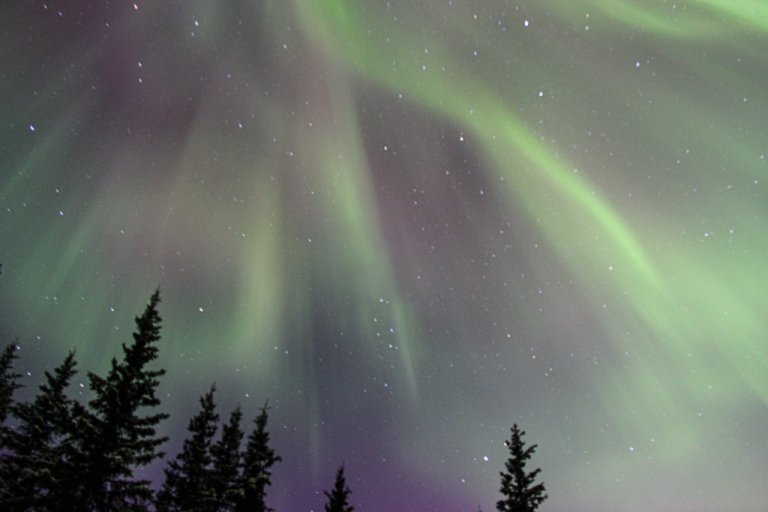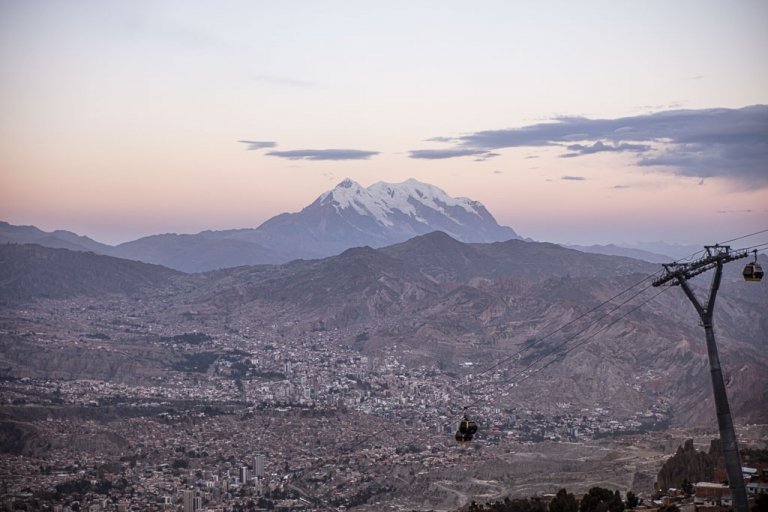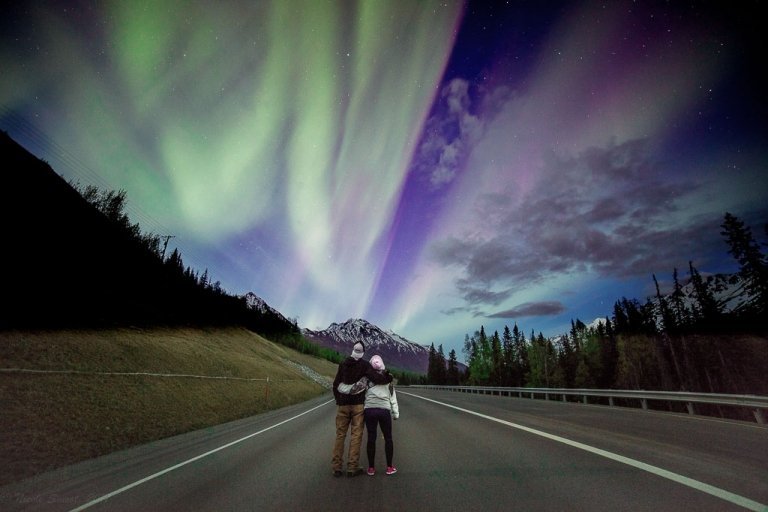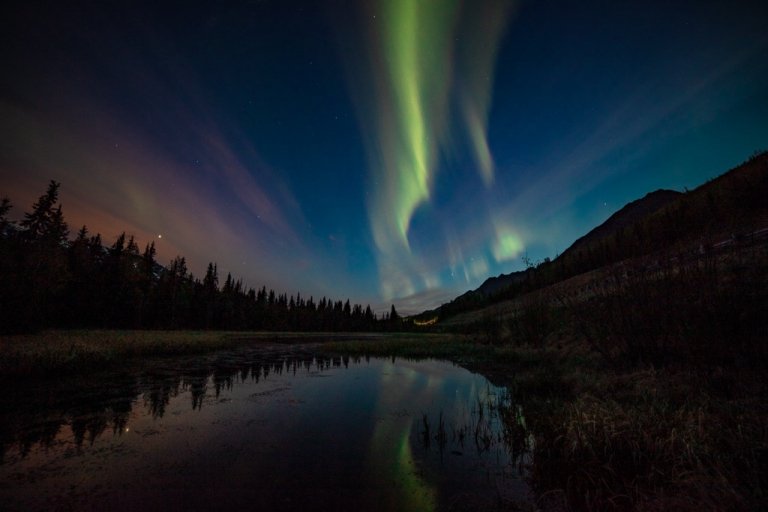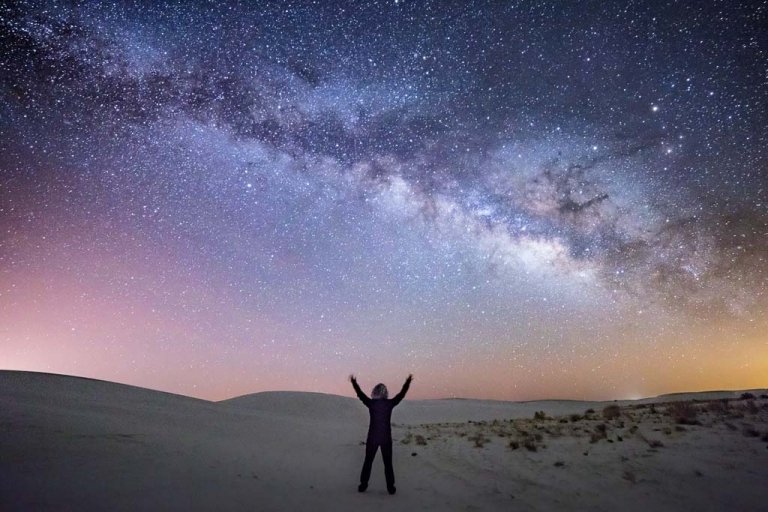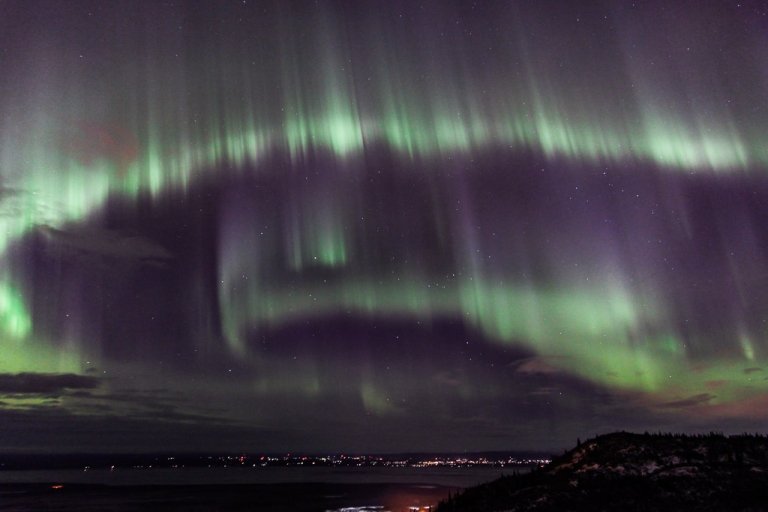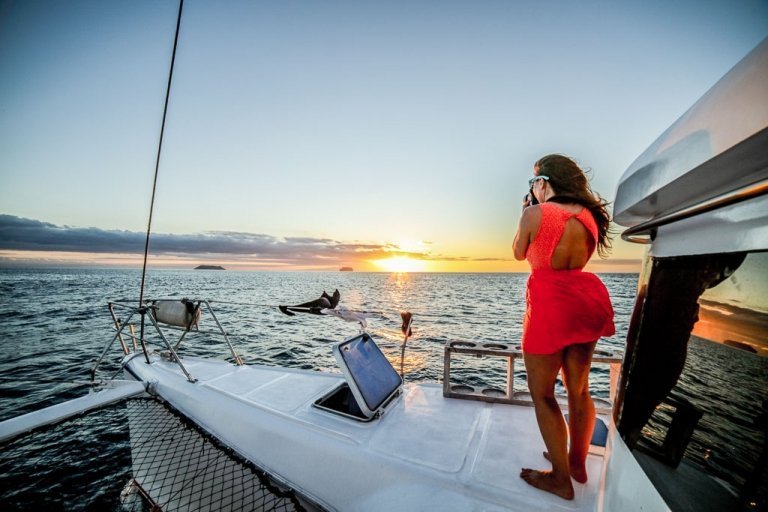
How to Shoot the Aurora:
What is Aurora?
Updated July 2023, What is Aurora was originally written in July 2017
This is part one of a four part series where I explain what gear you need to capture the northern lights, how to shoot it, and how to edit your aurora photos.
Aurora season in the northern hemisphere is just around the corner! Traveling to see the northern (or southern) lights is a big draw to polar destinations like Alaska, Antarctica, Finland, Greenland, and more!
Are you planning a trip to the high latitudes (or super low lats)? This four part guide series will give you all the tips, tricks, and a step-by-step list of how to shoot the aurora on you’re very own.
Check out the Northern Lights Guide for 9 awesome tips to help you see the aurora (and photograph it too!)
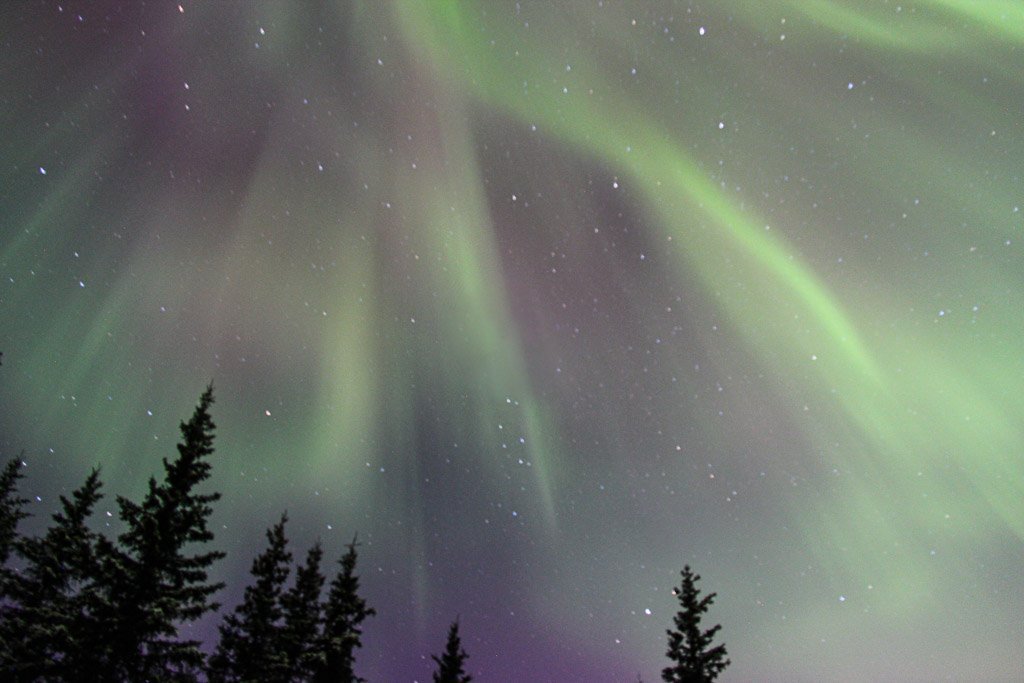
So, What Are The Northern Lights?
Aurora is a natural phenomenon that occurs in latitudes nearer to the poles. In the northern hemisphere, it’s called the aurora borealis or northern lights. In the southern hemisphere, they are called the aurora australis or southern lights.
Where Are The Best Places To See Them?
Many- the aurora circles the magnetic poles of the planet in an elliptical pattern. Therefore, the best places locations in the northern hemisphere to see them are Alaska, Iceland, Greenland, Norway Canada, Finland, Russia.
The best in the southern hemisphere to see or shoot the aurora australis is Antarctica, New Zealand, Tasmania, South Georgia, The Falklands, Argentina, and Chile.
It is best to head away from any sort of light pollution. That means head far away from cities or roads/highways for optimal viewing.
When Is The Best Time To See Them?
A huge mistake I see a lot of tourists coming (or planning to come) to Alaska make is coming the wrong time of year. Ehem, YOU NEED A DARK NIGHT SKY TO SEE THE AURORA! Sorry, I’m not yelling at you, I’m just trying to make my point loud and clear.
In areas approaching the Arctic/Antarctic Circles, we do not have much or any dark at all in the summer months. On the flip side, in winter months the sun barely rises or may not at all if you are located above the circle.
September through March are the best time to view the aurora in northern latitudes whereas March to September are best for their southern counterparts.
Also worth noting is the March and September are typically the two most active months for aurora.
What Conditions So I Need To See The Aurora?
You need a solar flare and a clear night sky. If cloud cover is forecasted you could have a Kp 9 storm and still never see them because, well, clouds.
Aside from the clear skies, you need a solar flare to blast the Earth’s atmosphere with charged particles. When these charged particles hit the upper atmosphere and meet oxygen and nitrogen, they give off different colors and are then funneled back towards the poles, because, magnetism.
The magnetic field is the reason why they’re more visible near the poles. What is aurora? Just lots of gas and space dust. Isn’t science f*****g awesome?
Can You Forecast The Aurora?
In theory? Yes. Scientists can and do try to forecast it, but it’s merely a highly educated guess.
Sometimes they’re accurate other times they’re dead wrong. If that evening in late December 2015 had been forecasted to be as high as it turned out to be, we all know my arse would not have been blissfully asleep in bed.
Use the forecast as a tool, but know you can’t 100% rely on its accuracy. And you thought predicting the weather was hard.
My favorite forecast website is the University of Alaska Fairbanks Geophysical Institute’s forecast. The forecast for North America, Europe, the southern hemisphere, and include the moon phases as well as a KP index graph.
What Is The 11 Year Cycle?

Okay, you’ve probably seen that click-bait propaganda flitting about the internet saying get out and see the aurora in ‘fill in the blank year’ before it disappears forever! Please remember that these headlines are complete and utter bs.
No, they are not going to disappear forever. Well, unless maybe the sun suddenly explodes, in which case it won’t even matter because we’ll all be dead anyway.
But back to the point here- the 11 year cycle. Ever since Galileo started tracking the sun about 400 years ago, we as humans haven’t stopped.
In 1843 Samuel Schwabe discovered the solar cycle. The peak of the 11 year cycle is when the sun is at its solar maximum, meaning that the sunspots are most numerous which indicates the sun is at its most active- This happens about every 11 years.
When the sun is most active is when the chances of you seeing the aurora greatly increases. Of course, there are variances in this cycle and it is totally possible to see the aurora at years in and around the solar minimum.
Just know that the last ‘maximum’ year was in 2013, and yet we’ve had great storms in 2014, 15, 16 and 17!
What Do I Use To Predict The Aurora?
I may be partial because I’m from Alaska, but I use the University of Alaska Fairbanks Geophysical Institute’s forecast. Aside from quite literally freezing their nads off half the year, this group of individuals with great brains studies the Earth’s geophysical processes, which includes the aurora.
Don’t worry they predict the aurora for the entire planet- that means you too Antarctica and New Zealand. Other websites to check out is NOAA.
This is what the forecast looks like on UAF’s Geophysical Institute’s website
I hope this first post ‘what is aurora’ in this series helps explain the what, when, and where of the aurora and eventually helps you learn to shoot the aurora!
Have Any Questions About The Aurora?
Ask your aurora questions in the comments section below.
Check Out The Other Posts In The How To Shoot The Aurora Series
What Camera Gear Should I Use To Photograph The Aurora?
Camera Settings For Shooting The Aurora
How To Edit Your Aurora Photos
Need Travel Insurance and Evacuation Services?
Start shopping for travel insurance plans over at IATI Insurance. Readers of the Adventures of Nicole get a 5% discount off your plan.
The Adventures of Nicole partners with Global Rescue to offer the world’s leading medical evacuation and security advisory services. To travel with peace of mind, shop evacuation coverage at Global Rescue.
